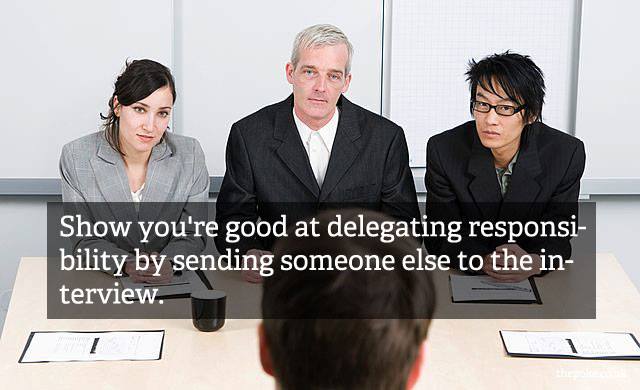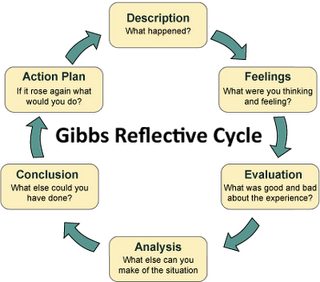Becoming the STAR of Your Own Interview
A blog on interviews, simulated and otherwise
Theory and Practice
When it comes to interviews, my first thought wouldn’t usually be to look for academic texts on the subject, or even to take a step back and apply something like the STAR system to how I approach them. That said, these texts and processes exist for a reason, and I find it really interesting how the STAR system is a sort of blueprint that apply to almost any interview, regardless of what kind of career you’re going for.

What I found with the STAR method, and the reason why I chose to use this particular example image, is that at its heart it’s a storytelling process. Almost every question you answer in an interview will ideally involve you telling some form of story about yourself. As someone who wants to write for a living one day, this is something that I found to work very well for me (though I usually try to avoid anything about me directly). For me using the STAR method is similar to writing a screenplay; you want to get to the point in as few words as possible while engaging your audience the whole way through.
You are your own protagonist, overcoming obstacles to reach a new normal that explains to your interviewer how you came out changed on the other side. In the case of trying to secure a job, it’s probably best that you avoid telling any tragedies, unless you can find a way to show how you learned from a wholly negative experience.

Taking the Mock out of Mock Interview
When it came time to choose where I’d like to work, I decided to use the experience to go for a dream entry level position – a story editor at the BBC, something that isn’t as out of reach as I though tit would be. Following on from my last blog post I’ll be using the Gibb’s reflective cycle (see Jasper, 2013 for a full summary), pictured below.

Description
Tasked with selecting a job description that we would be interested in, we were to send our chosen job to a group of peers before finally interviewing each other on the subject. In my case, I had a panel of three interviewers all asking me about how I intended to meet the requirements of being a story editor (see below).

In Great Answers, Great Questions For Your Job Interview, it’s stated that it’s important to “Understand the company’s business and communicate using its language. This will increase your credibility.” (Betrus, Block, ch.1). With this in mind, I took advantage of the clear criteria listed on the job’s description, and made sure to familiarise myself so that I could answer specific questions if required.
Feelings
It’s hard to ignore that this sort of interview is more about applying what we’ve learned than anything else. It lacks the stakes and nerves of a real job interview, and is a far more relaxed environment than the real deal. This made the situation much easier to go into and navigate, but as an exercise in coming across well in an interview scenario I think I was clear and concise in my responses.
Evaluation
Based on peer feedback, I feel that I performed very well in the interview. I was found to be as clear and consise as I felt, and it was noted that my answers were consistently relevant. Beyond that, I think in an actual interview scenario I would have been asked specific questions about BBC programmes that I could potentially be assigned to, and my preparation in terms of watching specific episodes could have been higher.
Analysis
The STAR method provides a surefire way to guide people through a well structured answer to their question, giving your interviewer just enough detail without losing the original point by waffling (which can be an issue of mine). That said, I’ve realised it’s important to build a comfortable rhythm in the way you answer your questions so you don’t become too formulaic. Ceri Roderick and Stephen Lucks note in You’re Hired! Interview Answers that “it does help to be aware of your ‘natural’ impact and whether it is likely to be an asset or a potential risk” (Roderick, Lucks, pg. 38). For me, it’s making sure the former doesn’t become the latter. I’m the kind of person who likes formula and structure, but in the case of the STAR method it became a bit of a crutch that I was using to make my answers too rigid and samey. While the content might have been different, and relevant, I was definitely feeling like a broken record in terms of how I was speaking. Luckily, this was easy to fix by stepping away for a bit during my practice.
Conclusion/Action Plan
In the future it’d definitely be wise to know exactly what kind of shows I would be working on beyond watching just a few episodes. In an actual interview scenario I’d likely be asked about the style, tone and difference from one show to another – learning the nuances of each would be a good way to secure the role.
Bibliography
Jasper, M. (2013) Beginning reflective practice. Andover: Cengage Learning EMEA
Betrus, Michael, Block, Jay a., Great Answers, Great Questions For Your Job Interview, 2nd Edition, McGraw Hill, 2014
Lucks, Stephan, Roderick, Ceri, You’re Hired! Interview Answers: Impressive Answers to Tough Questions, Trotman Publishing, 2010
Starting on a Positive Note!
Show, Don't Tell!
You May Also Like

When the BBC thinks you live in the Atlantic – My Simulated Interview
17 February 2022
Simulated Interviews: A Pointless Exercise?
14 February 2022
